The history of UK number plates
Why do we have number plates?
When motor cars first became popular, the number of vehicles on the road grew rapidly and it soon became clear that regulation was needed. The number plate provided a simple yet powerful way for the DVLA to identify and trace cars. Since their introduction, number plates have become an integral part of motoring life.
-
1903
The beginning of number plates
When were number plates introduced?
The Motor Car Act of 1903 was the first legislation of its type and it introduced number plates to British cars. The Act focused on driving licences, setting formal speed limits and vehicle registration. The last was an idea borrowed from the Netherlands, the first country to adopt national registration plates in 1898.
What was the first-ever number plate?
It is commonly, and mistakenly, believed that A 1 was the first British registration issued. It was certainly the first issued in London; Earl Russell and others queued up all night long outside London County Council's offices to acquire the number. Russell managed to secure it but, by that time in December 1903, other numbers had already been issued elsewhere. DY 1, for example, was issued on 23 November 1903 in Hastings. In fact, DY 1 is the earliest registration for which records still exist.
Dateless number plates
Each of the individual regional councils was given codes of one or two letters for registering vehicles. This letter code on the number plate identified the local authority responsible for registering the vehicle. The regional letter code was accompanied by up to four digits showing the registration's sequential order of release. Examples of this format would be A 1, AA 9999 and similar.
Unlike the formats that followed, these early registrations had no year code and so are now known as 'dateless' numbers. They are very popular as they can be assigned to cars of any age, effectively concealing the true age of the car. They are also increasingly rare as they were only generally issued until 1963. Unissued dateless numbers can sometimes still be released into DVLA auctions. However, other dateless plates are still being lost when old cars are scrapped and their owners neglect to save the registrations.
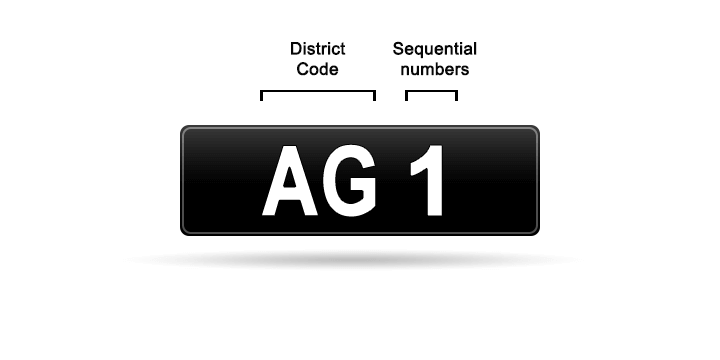
-
1932
New system introduced for dateless plates
By the 1930s, combinations from the original system began to run out, so a new format became necessary. An extra serial letter was added in front of the original letter codes. As the maximum number of characters that could appear on a registration plate was six, the new format meant that the number component was limited to three digits at most.
Examples of this format are AAA 12, BCD 999.
These new registration numbers were first used in July 1932.
-
1953
System reversed by councils for dateless plates
In the 1950s, some councils began to run out of the available dateless plate combinations. They resorted to a reversed format, putting the numbers before the letters. Despite tweaks like this to the system, the possible combinations soon ran short once more.
Examples of this format are 123 AAA, 999 BCD.
-
1963
Introduction of suffix number plates
Suffix vehicle registration numbers were introduced in 1963. This new format kept the earlier scheme of letters followed by numbers but added the 'suffix' letter to the end. 'A' was the first suffix letter and the letter would change each year, thus providing an indication of the year the number was issued. Number plates were no longer dateless.
An example of this format would be AHX 1A.
Not all councils embraced the suffix format at first, but in 1965, when the 'C' suffix was issued, adoption of the suffix format became compulsory.
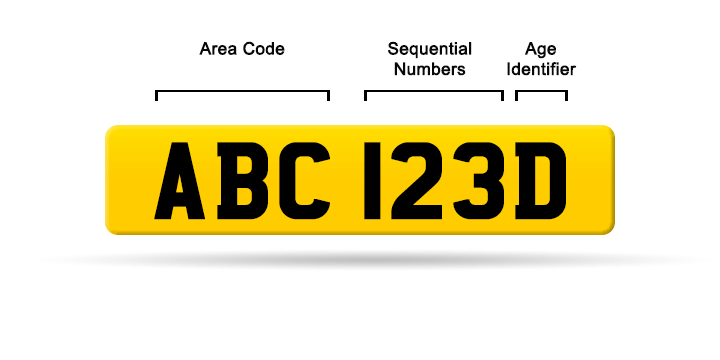
-
1974
DVLA’s Vehicle Registration Offices
On 1st October 1974, responsibility for the registration of vehicles was centralised and taken over by the Department of Transport. When the Department of Transport took over the function of releasing registrations from their specialised Vehicle Registration Offices, some area codes changed. Learn more from our DVLA number plate buying & selling guide.
-
1983
DVLA releases prefix number plates
Suffix combinations eventually began to run out, so in 1983 the 'prefix' format was introduced. This system worked similarly to the previous one, but the order of the character groups was reversed, putting the year identifier at the start of the number plate. The last prefix release was in 2001 and featured the year code Y. This prefix was the last before the format was replaced yet again later the same year.
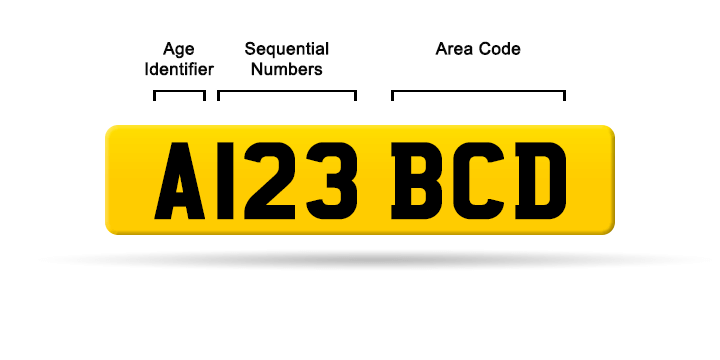
-
2001
The current style
The current style of number plates was introduced in September 2001. It was designed to provide enough combinations to last at least 50 years.
The first two letters are now the code for the issuing region, while the age identifier is now a numerical code rather than a letter. This number changes every six months in March and September, giving a more precise indication of the vehicle's age than the old year letter. The last three letters of the registration are randomly generated serial letters.
An example of the current format would be AA51 ABC.
Did you know?
You can read more information about the year codes and characters of all number plate formats with our comprehensive guide on car registration years.
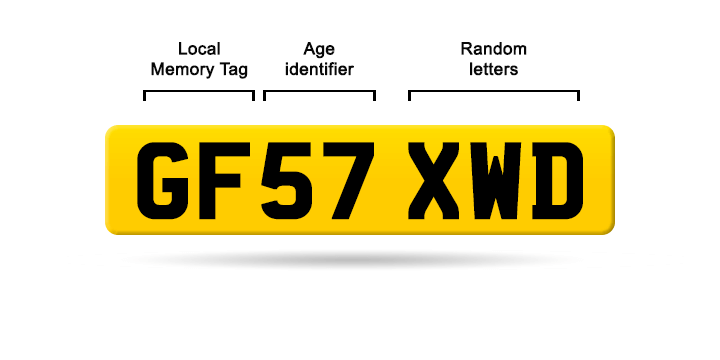
-
2019
Consultation on green number plates
On 22nd October 2019, the UK government proposed the introduction of green number plates in a consultation document. These plates would be for electric vehicles (EVs) and hydrogen-fueled vehicles only, which produce zero tailpipe emissions. Hybrid vehicles would not be eligible.
It was hoped that the scheme would encourage purchases of greener vehicles. While providing local authorities with an easier way of distinguishing zero-emission vehicles from more polluting cars.
-
2020
Release of green number plates
The green number plates were released on the 8th December 2020. Despite an initial lack of excitement for the scheme, ‘green flash’ number plates are becoming more common on UK roads.
Green number plates are offered as an option when you purchase your personal registration from Regtransfers (subject to vehicle eligibility).
Did you know?
There are many different acrylic number plate formats. Learn more about the rules and regulations around displaying them.
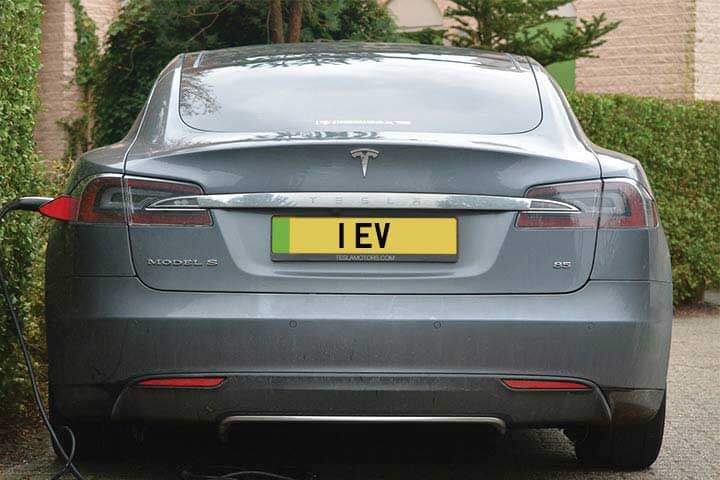
Playing our part for private number plates
Regtransfers is proud to have played a prominent role in the history of UK number plates since we opened our offices in 1982.
Learn more about our history.